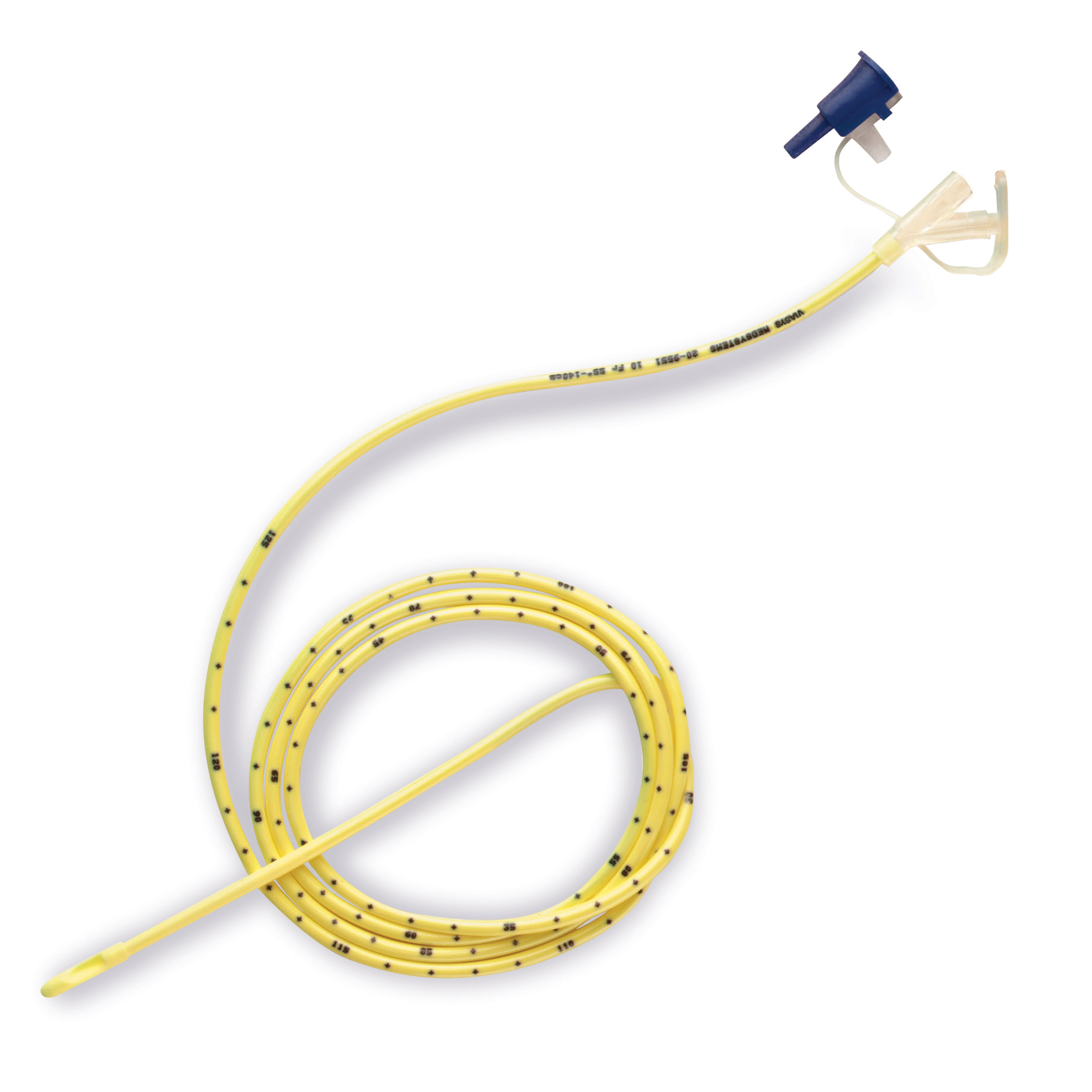Corflo Ultra Nasogastric Feeding Tube is intended for those who are unable to consume appropriate nutrients orally and require short-term enteral feeding help. This tube, which may be inserted by either nostril and directed down the pharynx and esophagus to the stomach, allows for safe and dependable nutrient administration. Once the location is confirmed, it is softly fastened with medical tape. The tube length typically runs from 36" to 45" and is made of high-quality polyurethane for maximum comfort and durability, providing a solid alternative for clinical nutrition control.
Features
- Weight: 3 grams.
- Material: polyurethane.
- It contains no latex or DEHP.
- Featuring an anti-clog feeding port.
- Radiopaque is used for X-ray confirmation.
- Water-activated lubricant is used to facilitate insertion.
- Used to provide nutrition to those who are unable to swallow.
- The ULTRA anti-clog exit port significantly reduces the risk of clogging.
- All CORFLO feeding tubes have Y-ports, which decrease contact contamination and enable flushing.
- The CORTRAK Enteral Access System is exclusively compatible with patented TRAK feeding tubes.
- The most complete assortment of adult, pediatric, and neonatal feeding tubes, providing a one-stop shop for all of your feeding tube needs, hospital or system-wide.
Indications for Use: The AVANOS CORFLO Feeding Tube is intended for individuals who require intermittent or continuous tube feedings through the nasogastric or nasoenteric route.
Device Lifetime: Device has been validated for use up to 30 days.
Tube Maintenance
- Follow your institution/facility/hospital protocol or clinician’s order.
- It is recommended that the tube be irrigated every 4 hours with up to 20 ml of water (up to 10 ml for infants or children) before and after medication administration or when feeding formula is interrupted.
- The feeding tube should be monitored, regularly assessed, and replaced when clinically indicated based on functionality and patient condition.
Complications
Infrequently occurring factors as a result of use or misuse of any feeding tube may include:
- Pneumothorax, GI perforation, Aspiration, Airway obstruction, Tissue irritation or necrosis, Allergic reaction, Contamination, and Delay in diagnosis.
- Delay or misdose of medication or nutrition and related complications or the need for additional medical procedures.
MRI Safety Information
Non-clinical testing demonstrated that the weighted CORFLO Enteral Feeding Tubes are MR Conditional. A patient with this device can be scanned safely immediately after placement under the following conditions:
- Static magnetic field of 3-Tesla or less
- Spatial gradient magnetic field of 720-Gauss/cm or less
- MRI system reported a whole body averaged SAR of 3.0-W/kg (i.e., associated with a calorimetry measured value of 2.8- W/kg)
For more Info, you can refer to the PDF
Warnings:
- The patient should not lean forward, nor should the head and neck be extended.
- Pre-measurement of tubing length is essential. Do not insert excess. Occlusion may result from the kinking of the tube.
- Coughing may indicate passage of the tube into the trachea. If tracheal passage is suspected, remove the tube. Absence of coughing does not confirm tube placement in the stomach. If resistance is encountered, immediately remove the tube. Notify clinician. Care should be taken if any type of endotracheal device is in place, as it may guide the feeding tube into the trachea. Misplacement of the feeding tube into the trachea or lungs may result in serious injury.
- Tube position in the stomach must be confirmed before flushing and use.
- Never reinsert the stylet when the tube is in the patient.
- Vigorous syringe force should not be used to irrigate, administer liquids, or unblock the tube.
Note: When administering crushed medicine, be sure to crush it finely and dilute it as appropriate (until there are no visible particles) to ensure the solution is of a low enough viscosity to avoid clogging.
